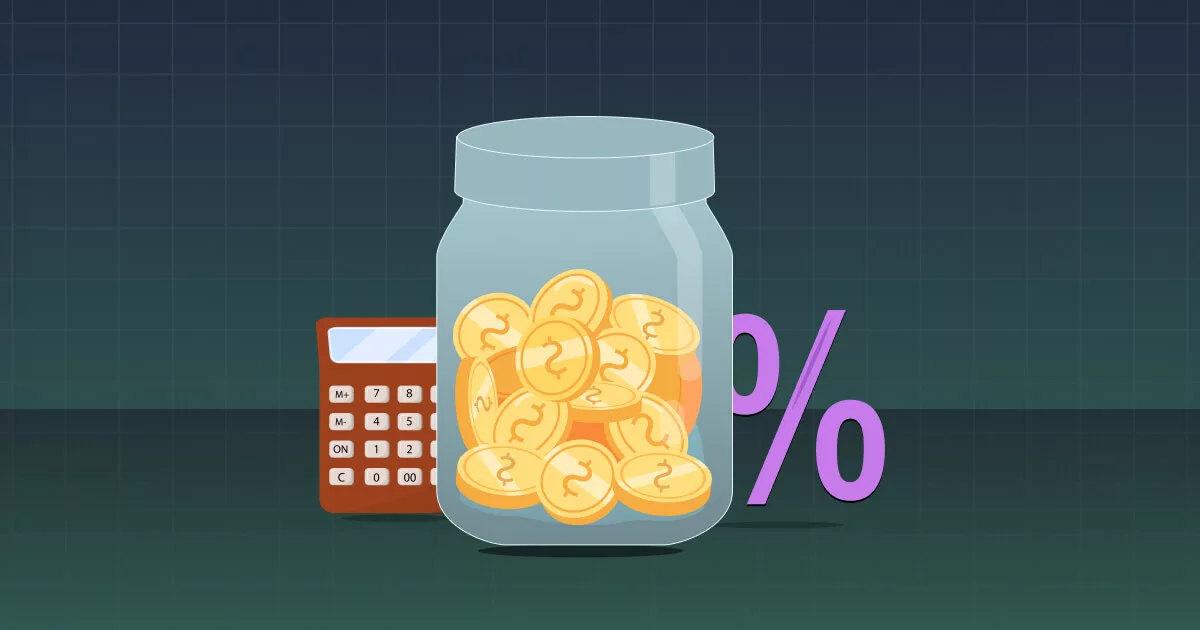
Nothing is certain in this world except death and taxes. No. It’s not us. It is Benjamin Franklin who said that.
There is no way to evade taxes, and finding ways to do so is futile. But then, there are some ways by which you can SAVE taxes. Yes, you read it right. The government of India wants to promote good financial behavior and incentivizes citizens with tax rebates to take that action.
But what are these behaviors, and how does one save tax in India? Well, that is exactly what we are going to talk about today. Healthy tax planning is a pathway to financial freedom. You would be surprised to know that the likes of Jeff Bezos and Elon Musk get away with paying zero taxes in a completely legitimate way. This is because of meticulous tax planning by their teams. While our scale of work might look very different from theirs, it is worth understanding how to save tax in India. Let us get started.
What Is Income Tax?
At a philosophical level, income tax is a government’s way of bridging the gap between the rich and the poor of a country. For people who earn beyond a specific limit, government levies taxes on their income to use it to fund social welfare schemes and the development of public infrastructure.
The income tax act came into existence in 1961. Everything pertaining to imposition, collection, and recovery comes under this act. Whether you are a salaried individual, entrepreneur, or freelancer, everything you earn is subject to a tax liability.
As of 2018, the government has collected INR 11.7 Lakh Crore worth of taxes from roughly 1.46 crore individuals. The table below highlights the amount of taxes every individual is bound to pay as per their income slab.
The good news is that you can save some taxes from the abovementioned table. How? By reducing your taxable income. Yes. I know that needs a little more context. And context is what you have in the coming section.
Easy Ways of Saving Tax in India
As mentioned earlier, the government promotes certain behavior by allowing a tax exemption for them. Just as a crude example, you can claim a tax rebate on the loan interest for the car loan on an electric vehicle. This is likely to promote EV sales and make the environment cleaner. Let us look at some of the most important sections to save on taxes.
1. Home loans
Yes. The government also wants its citizens to buy a house for themselves. Real estate powers the economy, and to make it slightly cheaper on the pocket, the government allows the following deductions:
- First, the entire principal of the loan is eligible for tax deduction under section 80C for an equivalent of up to 1,50,000. This means whatever your taxable income is, you can reduce 1.5L from it.
- Secondly, the interest component of this home loan is eligible for deduction up to 2L under section 24(b).
In other words, if you chose to invest in a house, you are eligible for tax rebates of up to 3.5L.
Individuals purchasing a property for home construction can also benefit from section 24(b), provided the construction process is completed within five years.
For first-time homeowners, a total deduction of an additional 1.5L can be availed under section 80EEA against the stamp duty (only if the value of stamp duty is less than 45L)
Apart from these, there are some government schemes like Pradhan Mantri Awas Yojna (PMAY)
2. Health insurance
Well, we don’t have social benefits in India like the west. But then, it does not mean it should burn a hole in your pocket every time you visit a hospital. Therefore, the government allows you tax exemption on the premiums you pay for your and your family’s health insurance.
This is done under section 80D. Depending on the age of the individual and parents, the deductible amount varies as per the below table.
| Eligibility | Allowed Deduction u/s 80D |
| Individuals (Or including spouse and children under 60 years) | Up to 25,000 |
| Individuals and Parents (Below 60 years) | Up to 50,000 |
| Individuals below 60 years and parents above 60 years (senior citizens) | Up to 75,000 |
| Individuals and parents above 60 years | Up to 1,00,000 |
The above tax rates are subject to changes.
3. Investing
Yes. Investing money in different government and equity schemes can also help you save taxes. Talk about shooting two birds with one stone, eh? Let us explore some of these schemes in detail:
3.1 ELSS
Equity-linked savings schemes, or ELSS, are a specific type of equity mutual fund. You can deduct the invested amount in these funds under section 80C. Only catch? These schemes have a lock-in period of 3 years. But then, no other mutual fund scheme is eligible for a deduction in India.
You can either invest a lump sum or do a SIP in these schemes. The gains from ELSS (and all other mutual funds in your portfolio) up to INR 1L in a single financial year are tax-free and attract a long-term capital gain tax of 10% if you exceed the limit.
3.2 NPS
Another brilliant scheme to safeguard your old, future self and save taxes while you are at it. Once again, it is related to the fact that Indians do not have access to infrastructure to take care of their well-being after retirement.
The national pension scheme or NPS allows citizens to reduce their taxable income up to 50,000 under section 80CCD.
NPS allows you to choose where your money is invested. You can assign a percentage of your capital to be invested in different instruments like debt, equity, government schemes, and alternate investment funds (AIFs).
Now NPS allows you to withdraw funds only after you have attained the age of 60 years. And that, too, is divided into two components. You can only withdraw 60% of the maturity amount; the remaining 40% is used to purchase an annuity to help you receive a pension. Premature withdrawals of up to 25% are only allowed after three years.
3.3 Term insurance
This is one of the most important financial products you will invest in. And if it saves taxes as well, there is nothing like it. A term insurance plan is pretty straightforward. You buy insurance that will pay the assured sum to a nominee in case of your death. This will ensure that your family is financially covered in case of an unfortunate event.
You can reduce the entire premium amount from your taxable income under section 80C.
Ideally, this should be treated as an indispensable tool to safeguard your family, not something that will give you returns or save taxes.
3.4 Public Provident Fund
This is a government-backed long-term investment scheme. While the interest rates remain fixed for an entire year, the government changes them every year. Currently, these rates stand at 7.9%, which is compounded annually until maturity (15 years). The best part of this scheme is that anyone can invest in it for as low as Rs. 100.
All investments under PPF fall in the EEE (exempt, exempt, exempt) category. First, the investment in PPF can be claimed for deductions in tax under section 80C.
The entire interest that is accumulated over the investment period is tax-exempted.
The third and final exemption under the EEE category means that the entire income generated, including your accumulated interest and principal amount, will not be taxable at the time of maturity withdrawal.
3.5 Senior Citizen Savings Scheme (SCSS)
SCSS applies to retired individuals or someone who has taken voluntary retirement. This scheme is excellent for individuals who want to make decent returns on their investments while taking no risk. Currently, SCSS offers 8.6% interest that can be claimed under 80C for tax deductions.
3.6 National Savings Certificate
NSC certificate is a fixed-income scheme by the Indian government that offers a return of 7.9% to its holders. You can apply for this scheme only by visiting a post office and purchasing a certificate. NSC can be purchased in the denominations of Rs.100. This has a lock-in period of 5 years and can be redeemed early only in the case of the holder’s death.
3.7 Fixed deposits
Some special types of fixed deposits also allow you to claim deductions under section 80C. These fixed deposits have a lock-in period of 5 years, and the interest rates are fixed at a 5-year prevailing FD rate. Investments have to be made in lumpsum only.
With this scheme, you can choose to get your interest on a quarterly, monthly, or annual basis. The interest earned is taxable, and TDS is also deducted on the same.
4. Tuition fees
If your child is studying a full-time course in an Indian school/university, you can claim up to 1.5L of their tuition fee as a deduction under section 80C. This option is limited to a maximum of two children per individual. This deduction is independent of the class of the child.
5. Education loan
Time to spend some moolah on your education. The government of India allows its citizens to get a tax deduction for the amount of interest paid on the education loan. Only condition? The loan should be for sponsoring the education of yourself, your spouse, or your kids. The loan should be taken from a recognized bank, and one needs to produce a letter from the bank that distinguishes between the interest and principal components of the loan.
This can be claimed under section 80E.
6. Charity
“So you mean to say that I can save taxes while helping the world?”. Well, yes. There are certain types of charity institutions registered under section 12A. All the donations made to them allow you to reduce your taxable income under section 80G. The best part is that there is no limit to this clause. So whatever you donate can be claimed under it.
The catch? You cannot donate in cash more than Rs. 2,000.
7. House rent allowance
Usually, salaries have a component called house rent allowance. This allows you to claim a deduction on your house rent. However, if HRA is not part of your salary, you can still claim it under section 80GG.
HRA is calculated as follows (for individuals with HRA as their salary component):
- It can be either 50% of your basic salary (for metros) or 40% of your basic salary (for non-metros).
- Actual HRA component in your salary slip
- It can be the excess of rent paid annually over 10% of the annual salary. For example, if you are earning Rs. 12L annually and you pay 2L as annual rent, you can claim a deduction of 80,000 (2L-1.2L)
Whatever is the least of the above figure can be claimed as an HRA deduction in your salary.
Apart from that, for claiming the HRA under section 80 GG, there are some other conditions:
- You should be self-employed or a working professional.
- You cannot file for section 80GG and get HRA from your company as well. For the year you claim deductions under 80GG, your salary slip should NOT have the HRA component.
- You or someone from your family should NOT own a residential property in the city you are claiming HRA for.
- You cannot claim HRA for your own (second) house.
The HRA under section 80GG is calculated by considering the lowest figure out of these three:
- Rs. 60,000 annually or Rs. 5000 monthly
- Total rent paid minus 10% of your salary
- 25% of annual salary
8. Interest income
The government wants its citizens to save money. Therefore, it incentivizes this behavior by offering a deduction against your interest income earned from any bank/cooperative bank up to 10,000.
If your interest income is less than that, you don’t have to worry. If it is more than 10,000, your deductions are capped at 10,000 only.
This can be claimed under section 80TTA.
9. Disability
It is quite difficult to cater to the needs of disabled dependents. Therefore, the government allows some tax deductions in such cases where one of your dependents (spouse, kids, parents) are at least 40% disabled.
This deduction can be claimed under section 80DD and is capped at 75,000 for individuals with dependents who are between 40% to 80% disabled and up to 1,25,000 for dependents with more than 80% disability.
Apart from that, you can also claim a rebate for the LIC policies purchased in the name of disabled dependents.
9.1 Section 80U
Section 80DD does NOT allow you to claim tax deductions for your own disability. This is covered under section 80U where the tax-paying individual with greater than 40% disability claims deductions ranging from 75,000 to 1,25,000. This disability can take the following shapes:
- Blindness
- Low vision
- Leprosy-cured
- Hearing impairment
- Locomotor disability
- Mental retardation
- Mental illness
10. Donations to political parties
You can also deduct income tax on contributions made to political parties under section 29A.
Should you choose to contribute to a political party, tax deductions can be availed on 50-100% of the contribution amount. According to Income Tax Act regulations, you can donate up to 10% of your gross earnings to any political organization of your choice.
This benefit is only available to individual taxpayers. Local authorities and companies cannot avail tax deductions under this section. Also, Artificial Juridical Persons who receive funds from the government are ineligible.
Tax Saving Investment Options
We have talked about a lot of investment options that have the potential to reduce the tax burden of an individual. Generally, the best way to approach these options is by evaluating your risk profile, short-term, and long-term goals and then taking a bet. One does not simply start with taxes in mind while picking the best option for themselves. Here is a quick summary of all the investment types under sections 80C and 80D that can save taxes.
| Investment Tool | Type of Investment | Eligibility | Expected Returns | Lock-in Period |
|---|---|---|---|---|
| Equity Linked Savings Scheme (ELSS) | Equity | Open | 10-14% (Depending on the markets) | 3 years |
| Senior Citizens Saving Scheme | Government Backed Scheme | Retired Senior Citizens or VRS Cases | 8.6% (currently) | 5 years |
| National Pension Scheme | Equity/Debt/Government/AIF (Investor can choose the allocation) | Open | 8-15% (depending on the allocation) | Till the age of 60. After 60 years, 60% is withdrawable and 40% is used to purchase an annuity to pay you a pension. |
| Public Provident Fund | Government Backed Scheme | Open | 7.9% (Currently) | 15 years |
| National Savings Certificate | Government Backed Scheme | Open | 7.9% (Currently) | 5 years |
| Tax-Saving FDs | Debt | Open | Prevailing 5-year FD rate | 5 years |
Planning Your Tax-Saving Investments for 2023
If you are a young professional who just started earning a substantial income of roughly 10L annually, improper tax planning could lead to a loss of up to 15K annually for you. While it may sound little, this could very well be equal to your annual increments. Therefore, it is important to learn about taxation while you have time.
The best time to plan your investments is at the beginning of the year. Allow me to make it real for you.
Usually, your office will reach out to you to declare your investments at the start of a financial year. And at that point, some people will procrastinate until the very end of the year. And when HR starts deducting heavy taxes from our salary during the last quarter of the year, we regret taking it so lightly.
So ideally, you should evaluate your life cover and health insurance and deduct it from the Rs.1.5L limit of 80C. Once that is done, plan the type of investments you will take to cover the shortfall. Planning early will also allow you to make a rational decision instead of a hasty investment in the first ELSS you saw when HR was about to close the tax portal window.
Another mistake that people make is that they declare their investments but don’t actually do it. While this will have no implications on your taxation initially, when you submit the proofs, it can be a daunting task to invest a lump sum in your declared investments.
Conclusion
When I was starting out my professional journey, I used to hate the process of tax declaration. But then, as my salary grew, so did my tax liability. And that is when I realized how important tax planning could be for your financial health. While I was exploring investment options for this year, I found out that one platform is offering baskets of cryptocurrency sorted by themes and managed by experts.
While it did not have any tax benefits, that is not the only criterion for investment.
FAQs
1. Do I owe tax on the interest earned on my savings account?
The interest income earned on the savings account is exempted from taxes till Rs. 10,000. Post that amount, you need to pay taxes as per the tax slab and declare it as interest income while filing for taxes.
2. What if my annual income is less than 5 Lakh?
As per the union budget FY22, income less than 5L is tax-free, but there is a catch. Up to 2.5L of this income is exempted from taxes, but you can get a rebate for the remainder of 2.5L. That means your tax will be deducted for the remaining 2.5L, but you will get it back once you file your taxes.
3. Which is the best tax-saving scheme in India?
There are multiple ways to save taxes in India via investing in government-backed or equity-linked saving schemes. But then, you need to understand your risk profile and time horizon before investing. For example, ELSS being a purely equity-based scheme, is risky but offers the highest returns. On the other hand, government-backed schemes like SSY, PPF, and NPS offer fixed returns at a minimal risk but with a longer lock-in period.




